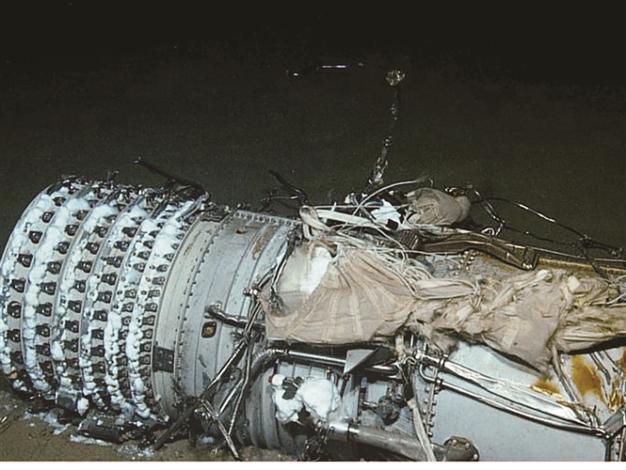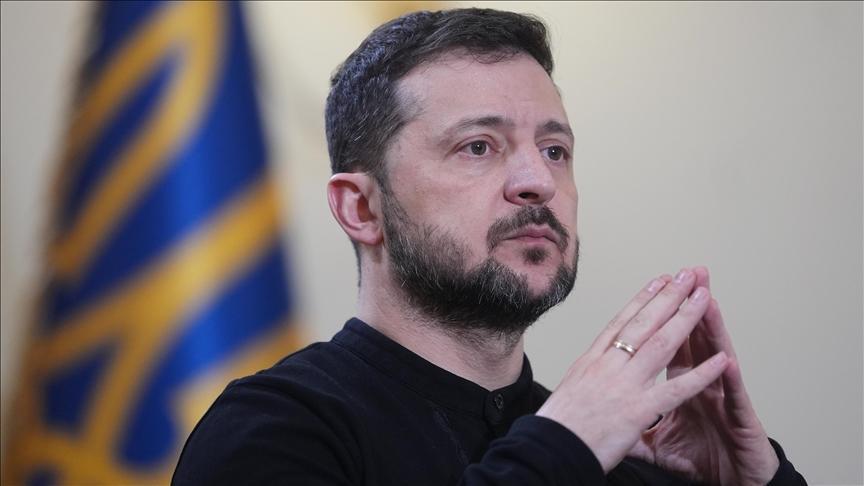Prosecutor: Jet downed by Syrian missile
ANKARA - Hürriyet Daily News

A part of the Turkish jet which is downed in June is seen in this file photo. Hürriyet photo
A Turkish warplane that crashed into the Mediterranean Sea on June 22 was shot down by a Syrian air defense missile that did not directly hit the plane, the Turkish Chief of General Staff Military Prosecutor’s Office said yesterday.According to an official report, radar data obtained from the plane’s computer indicated that the plane had received a signal from a missile although Syrian authorities have long insisted that they shot down the plane within Syrian air space with anti-aircraft guns as the plane flew at an altitude of 100 meters.
But the military prosecutor’s report said that even though there were no indication that a missile impacted the plane, the plane’s remains carried traces of a material found in missiles. The report added there was no damage to the plane that might have been caused by fire from an anti-aircraft gun, as Syrian authorities have suggested.
“Parts of the retrieved plane wreck were given a metallurgic examination, and traces of potassium chlorate, which is used as an oxidizing agent in missile fuels and as the main substance in missile warheads, were found splashed on the plane’s fuselage,” the report was quoted as saying.
The report concluded that a missile was fired at the Turkish plane as it flew in international air space in the eastern Mediterranean Sea. “The missile detonated just behind and to the left of the plane. The blast caused the plane and the pilots to lose the ability to continue a stable flight. The plane continuously lost altitude as it banked left, until it crashed into the water in a position slightly tipped to the left with the plane’s nose pointing up,” the report said.
It added that there was no indication of a technical malfunction that might have caused the plane to crash.
The Chief of General Staff’s Office had previously stated that the plane had been shot down by Syria but later changed its language to “the plane which Syrian authorities claimed to have shot down.”
Experts, however, have expressed dissatisfaction with the report, saying they need more information to be sure it was a Syrian missile that hit the plane.
Experts speaking on condition of anonymity told the Hürriyet Daily News that the blast effect indicated that a proximity fuse was used to trigger the explosion, meaning the missile did not need to hit the plane to down it. It also indicates that the missile could not be a short-range one, as they were not powerful enough to down a plane with a blast effect and do not contain a proximity fuse.
The report said the plane’s warning systems indicated missile radar signals. It does not, however, mean that the missile was radar-guided, one expert said.
“The report does not indicate the class of warning. It does not say whether it was the missile’s seeking radar signal, the targeting radar of the missile, or a missile warning that appeared on the system,” one expert said.
The first and second systems appear to be the same, but they are not, according to the expert. The missile’s seeking radar would indicate a specific missile, but the second option could indicate a modern defense battalion that functions with targeting radar, which guides the missile over long distances.
“The first choice gives more likelihood to a mid-range missile, while the latter means that the Syrian defense battalion may have hit it from a long distance,” another expert said.
The third option means only the identification of an approaching missile but gives no clue about the guidance system. “To make things more complicated, a mid-range missile can be fired from the sea. Turkish radars can only see Syrian land, so a mid-range missile may not be seen from Turkey. Firing the missile from a short range would not eliminate the time in which pilots could save themselves. Furthermore, Syria was not alone on the sea. We know that two frigates from the Russian Navy were there, too,” a second expert added.
The Turkish plane had the ALQ-178 early warning system produced by Turkish firm Mikes, which were recently installed on planes and are also used on Turkish F-16 reconnaissance planes.
They have the most up-to-date database in terms of missiles, according to officials.
















